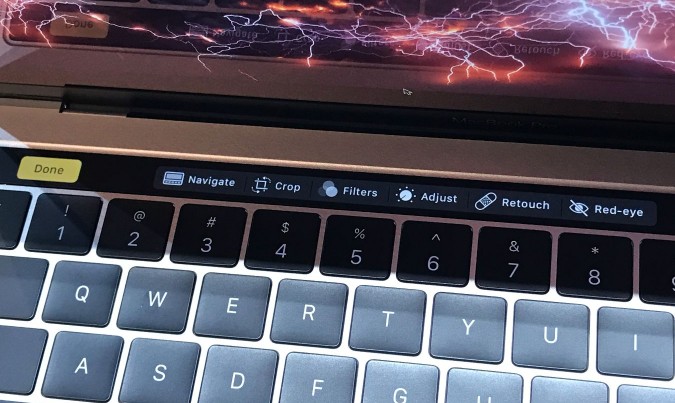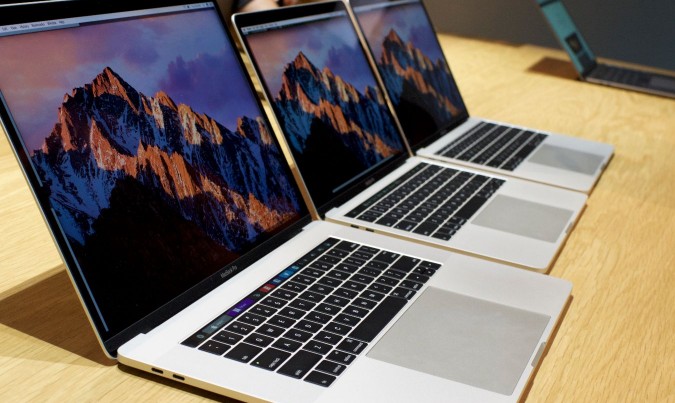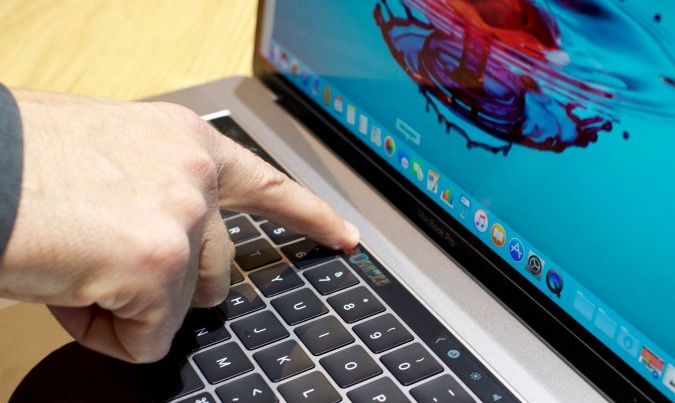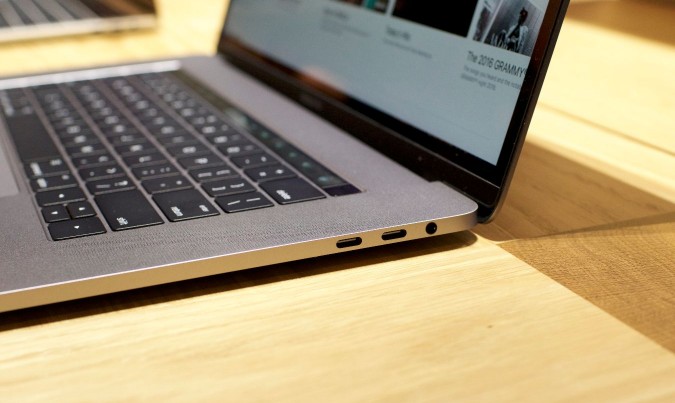New MacBook Pro Hands-on: Touch Bar Is NOT a Gimmick
The MacBook Pro is supposed to be for serious work, but the new Touch Bar is a lot of fun. Actually, it's a lot more than that. After spending just 20 minutes with the new 13-inch ($1,799) and 15-inch ($2,399) models, I've found it be a real time-saver.
However, I do have some other issues with the new MacBook Pro, including the lack of Intel's latest Kaby Lake CPUs and a missing SD Card slot.
Update 10/30: If you want most of the new features in the new 13-inch MacBook Pro minus the Touch Bar, we've just reviewed the new entry-level 13-inch MacBook Pro.
By default, the multi-touch display above the keyboard shows most of the same options you'd typically find in the function row, including buttons for the brightness and Mission Control. But the volume controls are different. I found it easy to slide my finger to the left and right to experience the 50 percent boost in volume from the stereo speakers.
MORE: The Best Laptops for Every Need
But the Touch Bar gets a lot more interesting when you start diving into various apps. In Photos, for example, you can rotate images and perform various edits, such as cropping, adding filters and retouching. All the buttons show up on the Touch Bar.
MORE: Best Mac Apps
Sign up to receive The Snapshot, a free special dispatch from Laptop Mag, in your inbox.
I also had a blast in the messages app, which auto-recommends emoji on the Touch Bar based on what words you're typing. In the QuickTime app, I could quickly scrub video back and forth with my finger to rewind and fast forward.
The Touch Bar isn't quite as bright as I'd like, but the display is still plenty colorful, and it's fairly easy to see the various controls that appear as you dip in and out of apps. Another one I tried with the Touch Bar is Safari, which shows your open tabs that you can easily scroll through with your finger.
The one thing I don't like about the Touch Bar is that it doesn't offer haptic feedback. It's too bad the Taptic Engine doesn't support this sliver of innovation.
What does vibrate is the mammoth touchpad on each of these MacBook Pros, which is twice as large as before. The Force Touch trackpads are positively huge, almost comically so on the 15-incher. It still feels like a real button when you press down, even though it's not.
So how about the keyboard? As someone who has been using the butterfly layout on the 12-inch MacBook, the flat layout isn't jarring to me, but it will be to those who are used to more travel from a traditional keyboard. Apple says that this 2nd generation butterfly mechanism offers better tactile feedback, but I didn't notice a huge difference. It felt just a little bit snappier.
When it comes to ports, I can probably live without full-size USB ports in favor of four Thunderbolt 3 ports, but I will miss having the SD Card slot. I don't use a dedicated camera much, but when I do I'd prefer not to schlepp a dongle.
The new MacBook Pros offer a host of other improvements, including brighter displays with wider color gamuts and more power. The 13-inch model goes with a 6th-generation Core i5 processor and integrated Iris graphics, but the 15-inch model is for power users, packing AMD Radeon graphics along with a 6th-gen, quad-core Core i7 CPU.
I do wish Apple had included a 7th generation Kaby Lake CPU on the 13-inch model. Intel hasn't yet made the jump to 7th gen for quad core on laptops, so the lack of Kaby Lake on the 15-inch MacBook Pro is understandable.
If I had to pick one model to have as my own, it would be the $1,799 13-inch MacBook Pro. But not everyone has that kind of dough. You can also opt for a 13-inch MacBook Pro sans Touch Bar for $1,499 that has a slower Core i5 CPU.
Overall, Apple has gotten the closest it has ever been to adding a touch screen without adding a touch screen. For whatever reason, the company simply doesn't want you to reach out and touch the display. That functionality is reserved for the iPad and iPad Pro.
Given that the MacBook Pro is a clamshell design, the decision to go with a Touch Bar makes sense, but it will be interesting to see if Apple sticks with this philosophy going forward as 2-in-1 devices gain in popularity.





